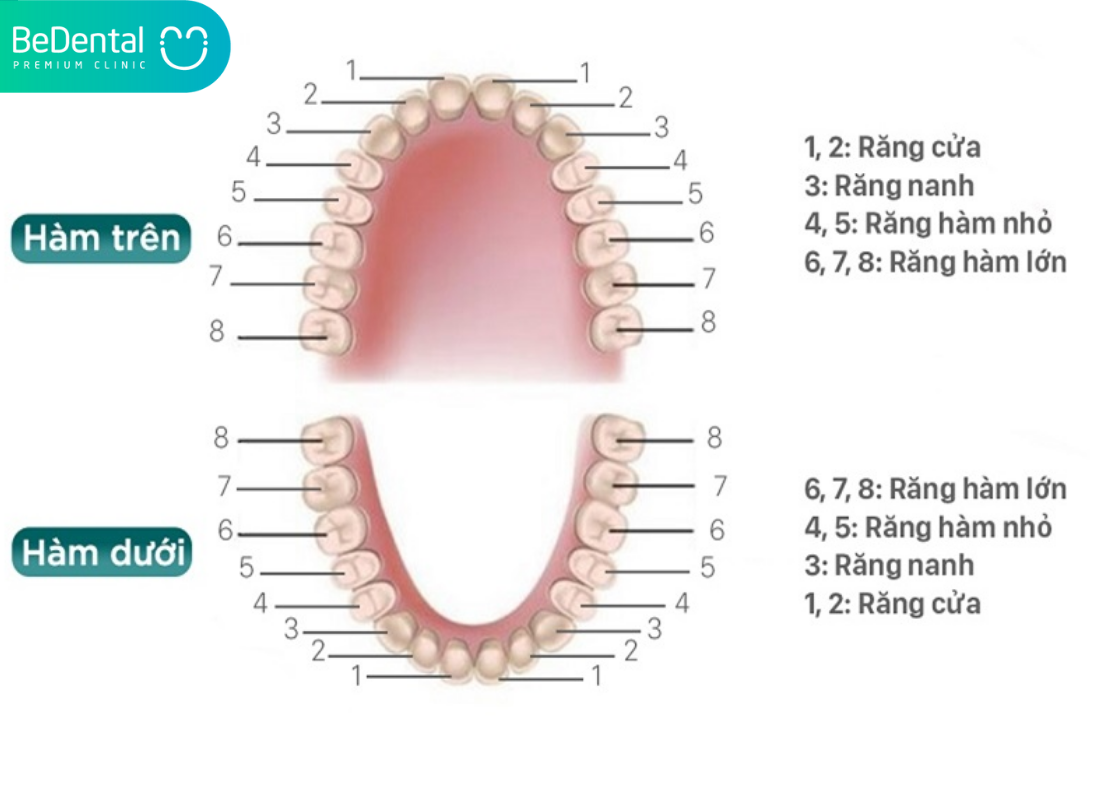Two dental restorations that can enhance the look and feel of your teeth are veneers and crowns. The primary difference between a veneer and a crown is that a veneer simply covers the front of your tooth.
While dental restoration techniques may be costly, it’s important to choose the one that is best for you. Both methods have a high success rate even though they are different.
This is a breakdown of how veneers and crowns differ from one another, along with their advantages, disadvantages, and typical applications.
What is a Veneer?
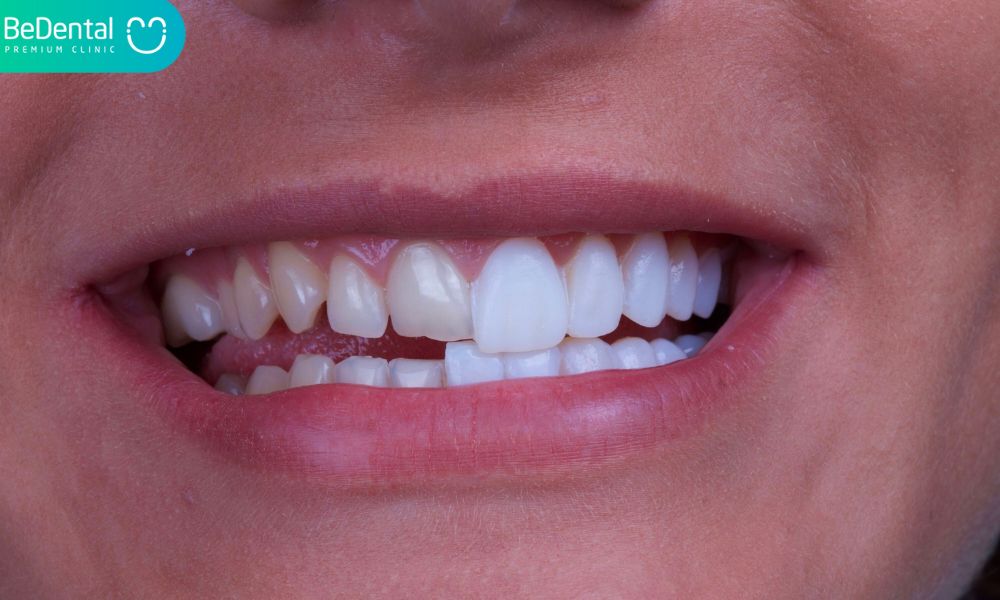
What is a Veneer? Dental veneers, sometimes referred to as porcelain veneers, are ultra-thin tooth-colored shells that are created to fit precisely over the front of your teeth. This is done to enhance your appearance.
Your tooth’s color, form, size, or length can be changed by the shells, which are glued to the front of your teeth.
Think about the several kinds of dental veneers, which can be constructed from porcelain or resin composites. They are referred to as either composite or porcelain veneers.
Veneers can restore stained teeth caused by:
- Root canal treatment
- Stains from tetracycline or other drugs
- Excessive fluoride
Moreover, veneers can be utilized to fix teeth that are crooked, cracked, chipped, or have gaps in between them.
Porcelain Veneers vs. Composite Veneers
In the long term, composite veneers are the most economical choice. Of course, the price of veneers varies based on your location and your dentist’s level of competence.

Procedure
Typically, a dental veneer involves three appointments: a consultation, a fabrication appointment, and an application appointment. Your dentist will need to check your teeth to see if dental veneers are suited for you and will go over the entire procedure with you.
To make room for a veneer, the tooth surface will need to be modified. The model of your tooth will then be made by your dentist. The model is subsequently tested in a lab. In the meanwhile, temporary dental veneers may be worn.
Your dentist will check the veneer’s fit and color on your tooth. Before securely gluing the veneer to your tooth, they will remove it and trim it to guarantee a good fit. The veneer’s color can be altered by the type of cement employed.
After that, the tooth will be polished, etched, and cleaned in order to get ready for the veneer. Etching makes the tooth more brittle so that a robust bonding process may occur. A unique cement is used to attach the veneer to your tooth.
Your dentist will use a special light beam to activate ingredients in the cement, causing it to set rapidly after the veneer has been placed correctly.
The last steps involve removing any extra cement, assessing your bite, and making any required corrections. To evaluate your gums and the location of the veneer, your dentist might ask you to come back in a few weeks.
Pros
There are multiple advantages when considering veneers.
- They provide a very natural appearance similar to teeth.
- Gums tolerate porcelain well.
- Porcelain veneers are stain-resistant.
- Color may be selected to make dark teeth appear whiter.
Cons
While dental veneers have their advantages, there are some risks to consider.
- Once completed, the process can’t be undone.
- Since enamel has been removed, your tooth may become more sensitive to hot or cold food and drinks.
- Veneers may not exactly match the color of your teeth.
- The color of the veneer can’t be altered once it’s placed.
- While unlikely, veneers can dislodge or fall off.
- You can still experience decay, even with veneers.
- Veneers aren’t a good option for people with dental problems, such as gum disease or decay.
- People who clench or grind their teeth aren’t good candidates for veneers since this can cause the veneers to crack or chip.
What is a Crown?
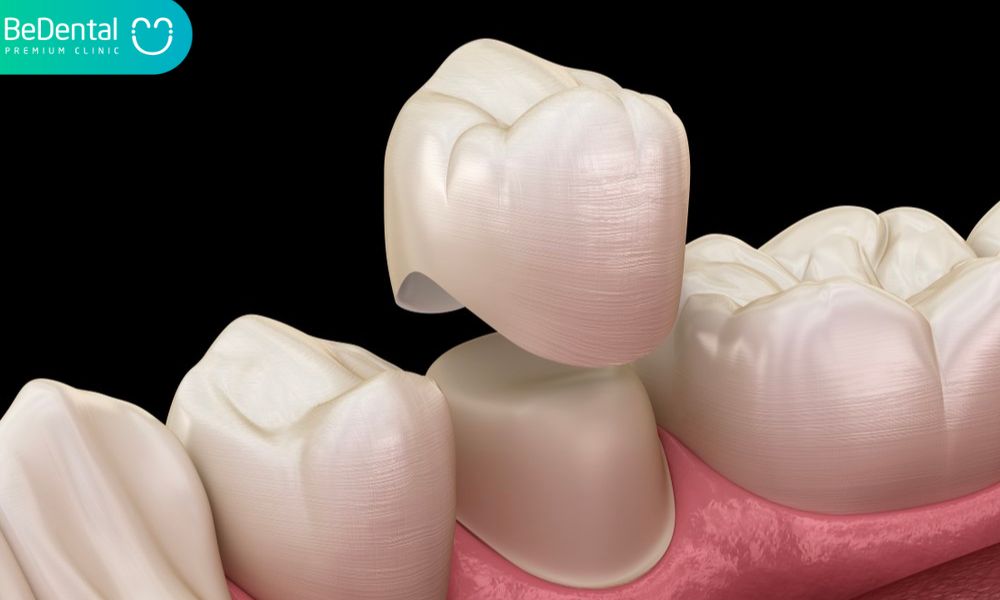
What is a Crown? A dental crown is a cap in the shape of a tooth that is bonded to the whole tooth. This covers the tooth while regaining its form, size, strength, and aesthetic appeal.
When a crown is affixed to a tooth, it completely encases the whole visible region of the tooth that is at and above the gum line.
Dental Crown Uses
When there aren’t many healthy teeth left, a dental crown can be used to cover and support a tooth with a big filling as well as to prevent a weak tooth from fracturing. Crowns can also be used to hide misaligned or discolored teeth, hold a dental bridge in place, cover a dental implant, and hold a dental bridge in place.
Procedure
Typically, two dental appointments are required to prepare a tooth for a crown. Your dentist could use X-rays at the initial appointment to check the surrounding bone and the roots of the tooth getting the crown. A root canal procedure can be needed initially if your tooth has severe decay or there is a danger of infection or pulp damage.
Your dentist will anesthetize (numb) the tooth and the gum tissue around it before starting the crown-making procedure. The tooth getting the crown is altered along the chewing surface and sides to make place for the crown. The kind of crown chosen will determine how much of your tooth is altered or removed.
Your dentist will use filler material to “build up” the tooth if a significant portion of it is missing in order to support the crown.
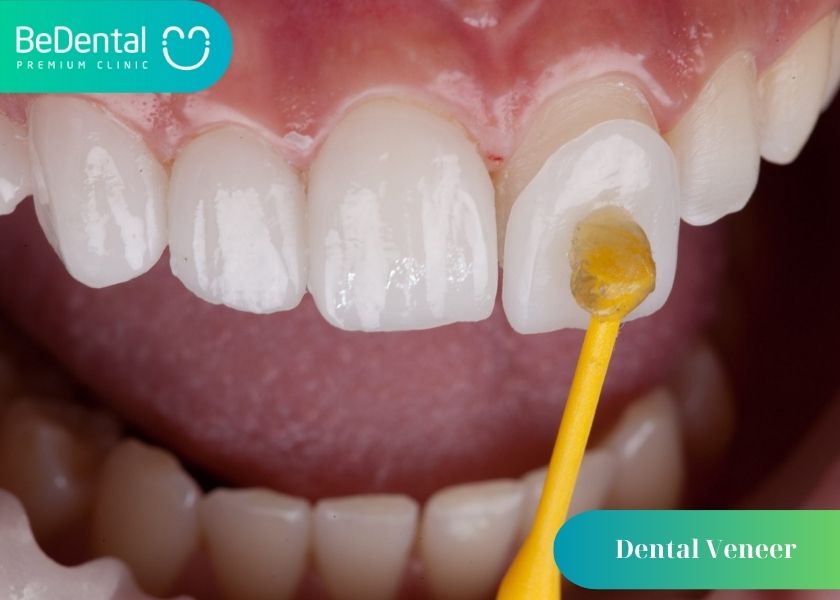
When your tooth has been reshaped, your dentist will make an imprint of it using cement or putty. In certain cases, digital scanners are utilized to capture images. Your dentist will also take impressions of the teeth above and below the tooth receiving the crown to make sure it won’t change the way you bite.
The crown is made in a dental laboratory using the imprints or scans that were sent there. It can take two to three weeks to finish this operation. In the case of a porcelain crown, your dentist will also pick the tint that complements the adjacent teeth the best.
Your dentist will create a temporary crown at the initial appointment to cover and safeguard the tooth while the permanent one is being created.
At the second appointment, your dentist will remove the temporary crown and examine the fit and appearance of the new permanent crown. If everything is in order, a local anesthetic will be used to numb the tooth before the new crown is firmly affixed.
Pros
Dental crowns provide solutions to a number of dental problems, including:
- Supporting a tooth that has been significantly damaged by decay
- Covering a dental implant
- Holding a severely cracked or broken tooth together
- Improving the appearance of a tooth by changing its shape or color
Crowns are long-lasting and can hold up for five to 15 years, depending on maintenance.
Cons
There are risks and complications to be considered when getting a dental crown, including:
- After receiving a crown, your teeth may be sensitive to heat or cold.
- Certain types of crowns, specifically porcelain crowns, can be more vulnerable to chipping.
- If there isn’t enough cement keeping it in place, a crown can get loose or even fall out.
- While uncommon, some people may experience an allergic reaction to the metal used in some crowns.
- If the gums around your crown get sore, irritated, or start bleeding, you could be developing gingivitis or gum disease.
What is the difference between veneers and crowns?
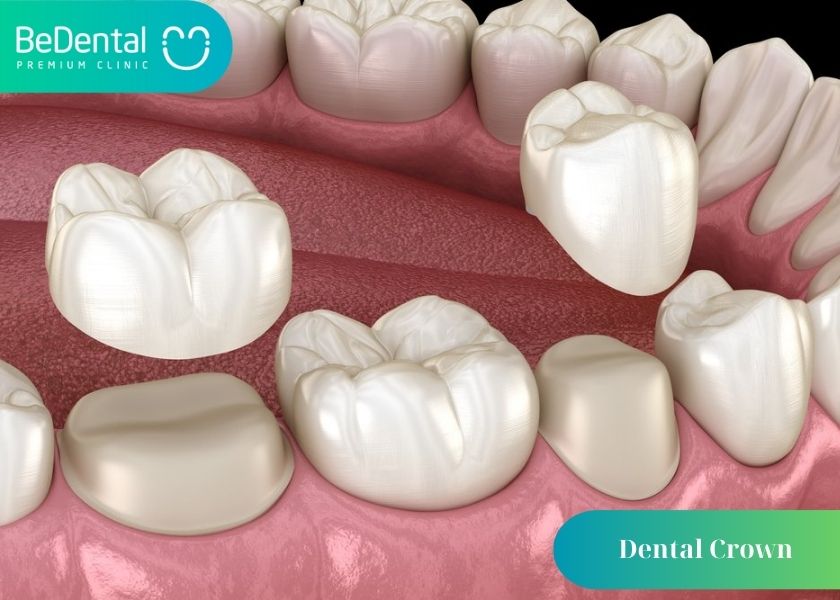
The two key distinctions between veneers and crowns are how they fit your teeth and if you need them.
- A porcelain veneer just clings to the front of the tooth, but a dental crown repairs the complete tooth.
- Veneers have less gum lines than crowns, so they look better.
- Crowns are thicker than veneers—two millimeters vs one millimeter—and more durable.
- While crowns can endure for the rest of your life, veneers may need to be replaced after a certain number of years.
Costs
It’s crucial to examine both the costs and benefits of veneers and crowns. Here, you can view a detailed price list for BeDental.
Veneer
The price of veneers varies according to your needs and objectives. The cost of a porcelain veneer normally ranges from 1,000,000 VND to 5,000,000 VND. They may last up to 20 years with proper dental care, which makes them a great investment.
Crowns
Generally, crowns can range from 7.000.000 VND to 16.000.000 VND per crown. Once again, the cost of veneers can vary depending on where you live and your dentist’s experience.
In addition, at BeDental clinic, you can receive a warranty valued from 7 years to permanent, depending on which type of veneers. In particular, for Porcelain Veneer Venus from Germany you have an authentic 7-year warranty. Besides, you are free to choose your installment plan through credit cards from various banks such as Vietcombank, Sacombank, VPBank, HSBC,… The installment process is quick and very simple.

Summary
Remember that the purpose of your treatment is to enhance the appearance and functionality of your teeth when you choose between veneers and crowns.
Veneers are frequently utilized when an aesthetic change is sought, such a chipped tooth. Crowns should be taken into consideration when a tooth has extensive deterioration.
Discuss your alternatives with your dentist while keeping in mind your oral health, the ultimate effect you want, and your budget.
More
Dental Filling vs Crown: 4 things to consider
Jaw fatigue: 4 things you should know
Teeth fluorosis: 4+ things you must know
A Periodic Dental Check-up: 5+ Things You Should Know





